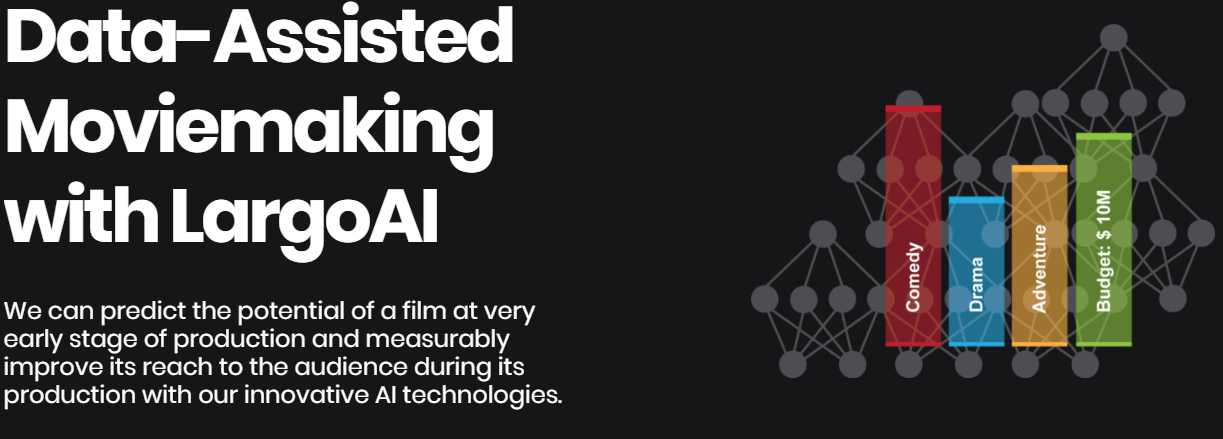
As with any question, there is a lot more to whether or not data-driven filmmaking is a good or bad thing.
Technology has fueled the enormous advances in our civilization and will continue to do so in the future.
While many of us choose to fantasize about when times were simpler in our childhood, the simple fact is that we all benefit immensely from technological advances.
One place where technology has always made an impact, is the movies.
Without the technological advances that allowed images to be captured to celluloid film, there would be no movies today.
The multibillion-dollar global film industry owes its entire existence to technology and the furtherance of this technology.
Most moviegoers today simply would not go to watch an early silent film on account of the lack of technology such as sound and color images.
The latest stage of the integration of technology into film is data-driven movie making.
In this article, we are going to look at the moral implications behind this exciting, new technology.
What is data-driven filmmaking
In a nutshell, data-driven filmmaking is the term that refers to the application of big data analytics to movie production.
Thanks to the advent of sophisticated new computer algorithms like our very own LargoAI, specialist companies are able to identify trends and patterns from large amounts of data.
So, for example, we can use LargoAI to gain accurate predictions of potential movie grosses even before they have left the script or production stage.

By comparing the subject film with over 30,000 previous releases that have already been analyzed by Largo AI, we can accurately predict a potential gross range for any movie throughout different regions of the world.
The amazing thing about such computer algorithms is that they become more accurate as they analyze more and more data.
The main areas that stand to benefit in the short term from data-driven moviemaking are:
- Accurate movie gross prediction by region
- Identification of week or unappealing aspects of a film at the script level
- Better casting decisions
- Target marketing
As I have written previously, big data analytics is set to revolutionize almost every single aspect of a movie’s production.
This will be anything from the automation off storyboarding and film schedules to allowing movie production companies to more accurately budget movies.
Big data analytics in moviemaking: right or wrong?
History has proven that we often embrace new technologies without considering the consequences.
A perfect example in recent times is our obsession with social media.
Not only have recent studies identified a link between the amount of time we spend on our social media and increase levels of unhappiness, but revelations such as the Cambridge Analytica Scandal have proven the darker side of the use of our data.
So what exactly are the potential problems with data-driven movie making?
At the current time, opinions regarding big data analytics and film are divided into two main camps.
For traditionally-minded filmmakers and fans, the general opinion is one of deep concern.
All of these individuals regard movies as an art form and the filmmakers as artists. For years, battles have raged between the creative element behind a film and those representing the financially focused one.
A quick Internet search will reveal just how many directors writers actors and actresses have been fired from films over differences of opinion.

A classic example of this can be found with the movie Spartacus. producer and star Kirk Douglas famously fired several directors and spent the rest of the movie in conflict with legendary director Stanley Kubrick, who had been brought in to save the project.
It was said until his dying day, his association with the Spartacus project was Stanley Kubrick’s biggest regret.
For this camp, the intervention of big data analytics in any part of the creative process that results in a film would represent a watering down of the film’s true artistic vision.
One example that is frequently likely to appear is the alteration of a potentially upsetting ending to a happier one.
Since the application of big data analytics will inevitably be too boost origin satisfaction and therefore revenue, the parameters used to assess a movie’s good and bad points will focus on these things.
This will mean the pendulum will have swung to the side of financial gain rather than the artistic one.
Inevitably, this will result in many potentially classic films being watered down artistically.
The movie Chinatown’s ending would be one example of an ending that would be destined for the cutting room floor were big data analytics to suggest changes based on mere audience satisfaction.
While some filmmakers have enough star power to ensure their artistic vision makes it up onto the silver screen, most movie makers will find themselves overruled by profit-focused producers.
That is, of course, unless the movie industry recognizes the value of artistry and build this into the parameters used by data-driven moviemaking companies to assess films.
In such a case, movies could be assessed for a range of more complex psychological characteristics and effects that would allow them to be graded for artistry as well as commercial viability.
Will this to be the case, the moviemakers themselves would find big data analytic moviemaking an invaluable tool in helping them too improve the depth and scope of their artistic vision.
Data-driven moviemaking will one day have the power to help filmmakers make their vision darker and more terrifying in the case of horror movies, more heartfelt earned unforgettable as in the case of romantic movies such as Casablanca, etc. Its power is almost limitless.
In Conclusion
The depth and breadth of this issue are far too much to discuss in one simple article.
Provided that the film industry doesn’t panda to simple profits, the application of big data analytics and moviemaking will have an enormously positive effect on the film industry.
It is important not to forget but at the current time, the American film industry is entering a period of dire straits.
Today, the vast majority of movies being made by this industry are either 100 billion-plus blockbusters or 10 to 50 million dollar movies that barely make it to movie theaters.
Data-driven movie making and the use of target marketing has the potential to massively increase the number as well as the breath of the movies being made.
This is because movie production companies and studios will be able to accurately assess audience numbers for each film before they even green light it.
So while the vast majority of people still want to go to see mindless action blockbusters, marketing data will also establish market sizes more niche movies such as documentaries, westerns, etc.
Once this begins to happen the overall health and interest in movies will increase.
Head to the Largo website to learn more about data-driven moviemaking.





Stay connected